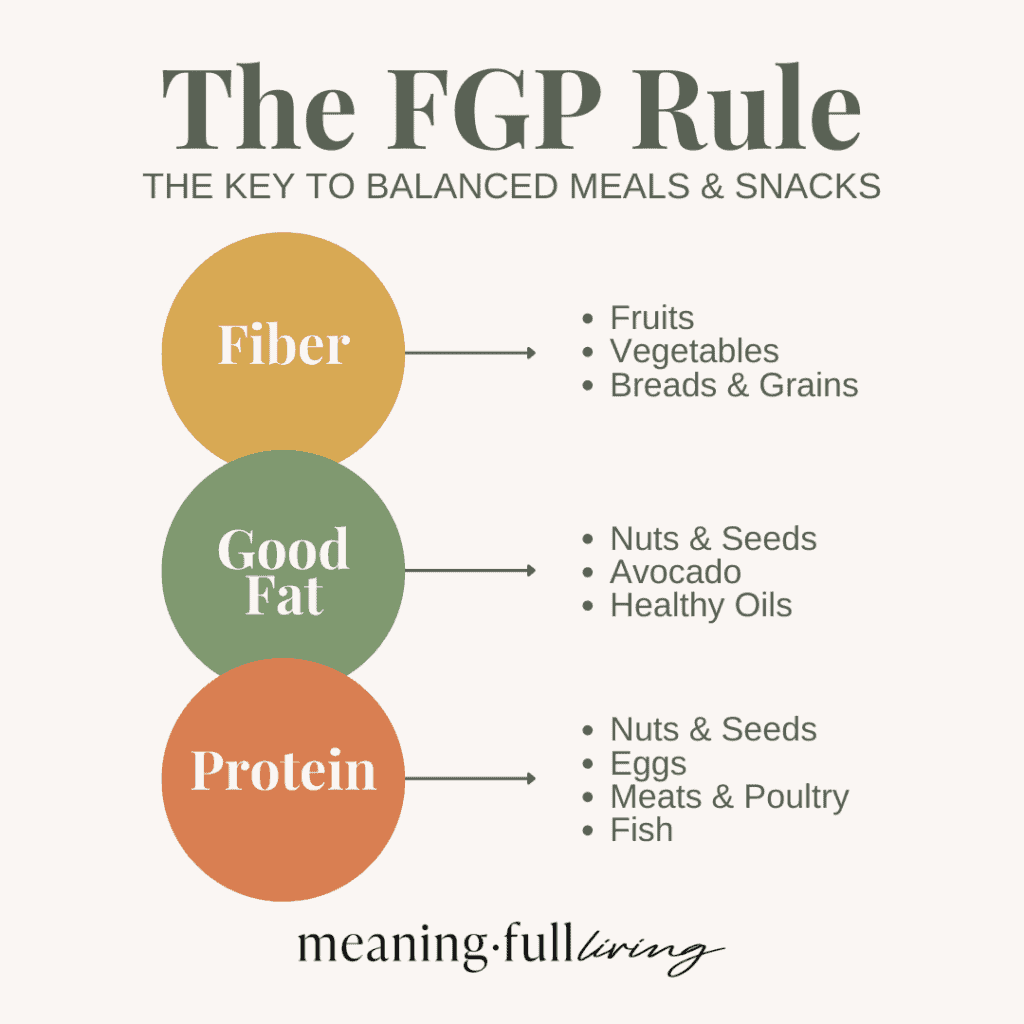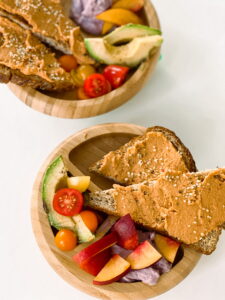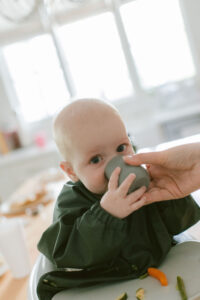Everything You Need to Know About Snacks and Kids: When to Offer Them, What’s the Difference Between a Meal and a Snack, and Good Snack Ideas
A few questions we get from you all the time are What’s the difference between a meal and a snack?, When should I offer snacks?, and What are some good snack ideas? We’ve created this resource to answer these questions and offer some ideas that will keep your snack game on point!

Everything You Need to Know About Snacks and Kids: When to Offer Them, What’s the Difference Between a Meal and a Snack, and Good Snack Ideas
A few questions we get from you all the time are What’s the difference between a meal and a snack?, When should I offer snacks?, and What are some good snack ideas? We’ve created this resource to answer these questions and offer some ideas that will keep your snack game on point!
What’s the difference between a meal and a snack?
We like to say that a snack is a mini meal, typically composed of 2-3 items rather than the 3+ items served at meals. Technically, you can serve anything for a snack, but the best snacks are ones that follow our FGP Fun™ Rule: Fiber, Good Fat, and Protein. When designing a snack (or meal), you want to make sure you always have at least 2 out the 3 categories so that that snack is balanced. This combination really sets your kid up for success because it will keep them energized and full until their next meal while providing the nutrients they need for proper growth and development.
We’ve included our FGP Snack & Meal Maker along with some snack staples and combinations below!
At what age should I start offering snacks?
It makes sense to start offering snacks around 1 year of age. Before that, babies are getting enough well-rounded nutrition from their formula and breastmilk. However, toddlers and young kids need to eat every 1.5-3 hours when awake, so this looks like three meals and one to two snacks per day depending on their nap schedule.
When should I offer snacks?
When it comes to snacks (and any meal), consistency and predictability are key. Our kids may ask for snacks constantly, but it’s actually important to offer snacks only at designated times. First, this is important because the more predictability children experience, the better they do. But this is also important because it teaches our kids about their own hunger and fullness cues. Simply put, it’s hard for their bodies to pick up on these cues if they’re always grazing. If our kids are given snacks and meals on demand, they won’t really understand what hunger and fullness feels like, a skill they need to grow into less picky, intuitive eaters.
Second, hunger drives us to step out of our comfort zone and try new foods. When we are full at a meal, there is no need to branch out and give other nutritious foods a shot. Additionally, research shows that constant snacking can result in a preoccupation with food and lead to less nutritious meal choices down the line.
And finally, sticking to a predictable schedule with snacks improves your child’s ability to make an educated decision about when to enjoy or skip snacks. If they have refused a snack at the scheduled time and then ask for it later, simply offer water and say something like: “I hear you’re hungry, and we have snack time at XX o’clock. Until then, you can have water, and we can…” If you find that your kid is refusing meals or snacks pretty regularly, check out this article. And for more tips on raising a less picky, intuitive eater, download this free guide here.
Disclaimer: There is a time and place for grazing! When you are traveling, your child is sick, or your routine is out of whack for some other reason, it’s okay to let them graze. But for typically developing kids, we want to avoid non-scheduled snacking on a day-to-day basis.
What does a typical snack schedule look like?
Sample Schedule: 12-18+ Months with Two Naps
| 7:00 am | Wake up |
| 7:30 am | Breastmilk + milk |
| 9:30 am | Nap |
| 10:30 am | Snack (Optional)* |
| 12:00 pm | Lunch + milk |
| 1:30 pm | Nap |
| 4:00 pm | Snack (Optional)* |
| 5:30 pm | Dinner + milk |
| 6:30 pm | Bath + bedtime routine |
| 7:00 pm | Bedtime (Optional milk before bedtime) |
Sample Schedule: 18-24+ Months with One Nap
| 7:00 am | Wake up |
| 7:30 am | Breakfast + milk |
| 10:30 am | Snack |
| 12:00 pm | Lunch + milk |
| 1:00 pm | Nap/quiet time |
| 4:00 pm | Snack |
| 5:30 pm | Dinner + milk |
| 6:30 pm | Bath + bedtime routine |
| 7:00 pm | Bedtime** |
The FGP Fun™ Rule for Meals and Snacks

Offering a balanced snack is key to keeping your kiddo full and energized until the next mealtime. We’ve taken the guesswork out of snack prep by creating the FGP Fun™ Meal and Snack Maker, which should make designing well-balanced meals and snacks a breeze!
Here’s how it works: Select and serve a food from at least 2 of the 3 categories below. For example, if you’re used to serving an apple for a snack (F), add some yogurt with cinnamon (G & P) or a nut/seed butter of your choice (G & P) to balance it out. And then when you can, make meals fun by tapping into your kids imagination. These simple items can turn a regular meal into a fun meal. It’s that simple!
Where can I get snack ideas?
Our favorite snack combos:
- Smashed avocado toast: lightly toasted slice of bread or crackers + Green Goddess Dressing + smashed avocado + hemp/chia/flax seeds sprinkled on top
- Avocado rolled in nutritional yeast and/or yogurt
- Applesauce + cheese
- Hard boiled eggs + crackers or piece of toast + cucumber (or any fruit or veggie)
- Softened apple (steamed or in form of applesauce) + nut/sunflower butter (served in thin layer or mixed into applesauce)
- Hummus + veggies (steam veggies for kids under 3-4 years old)
- Hummus + veggies (steam veggies for kids under 3-4 years old) + pieces of pita (or pita chips for kids 3-4 years and older)
- Hummus + crackers + fruit or veggies
- Baked apple chips + yogurt
- Cheese + crackers + fruit
- Seasnax + cheese + sliced fruit
- Berries + cheese
- Banana + toast + thin layer nut/sunflower butter + hemp/chia/flax seeds sprinkled on top
- Smashed berries + yogurt
- Clementine or orange slices (or any fruit) + rolled turkey + cucumbers
- Guacamole + veggies (steam veggies for kids under 3-4 years old)
- Guacamole + veggies (steam veggies for kids under 3-4 years old) + crackers or pita
- Roasted sweet potato rounds/chips + ranch dressing
- Veggies + ranch dressing (steam veggies for kids under 3-4 years old)
- Black bean spread + cracker or toast + bell peppers + nutritional yeast and/or hemp/chia/flax seeds sprinkled on top
- Black bean spread + pieces of pita (or pita chips for kids over 3-4 years old) + smashed berries or clementine slices + nutritional yeast and/or hemp/chia/flax seeds sprinkled on top
- Raspberry chia pudding + yogurt
- Crackers + cream cheese + smashed berries (or any fruit)
- Food pouch + yogurt (discount code: LIVING at www.onceuponafarmorganics.com)
- Softened pears + cheese
- Softened pears (or any fruit) + thin layer of nut/sunflower butter
- Dried fruit + yogurt
- Dried fruit + cheese
- Dried fruit + crackers + thin layer of nut/sunflower butter
Snack staples in our homes:
- Snack plates
- Smoothies
- Homemade applesauce
- Black bean spread
- Hard boiled eggs
- Nut butters and/or sunflower butter
- Hummus
- Berries
- Cut-up fruit
- Cut-up veggies
- Baked Apple Chips
- Seasnax
- Skout Bars
- Dried fruit such as raisins, dates, dried apricot, mango gummies, mango & orange gummies, mango jerky, mango & cacao
- Stuffed Dates
- String cheese, cheese cubes, and/or cheese slices
- Guacamole
- Rolled turkey slices
- Roasted sweet potato rounds/chips
- Dairy-Free Ranch Dressing
- Green Goddess Dressing
- Sprouted popcorn (for kids 3-4 years and older)
- Crackers
- Popsicles (these, these, and these) and our favorite popsicle molds
- Banana Egg Pancakes
- Raspberry Chia Pudding
- Peanut Butter and Jelly Muffins (can be made nut free)
- Homemade Granola Bars
Remember to adjust the way the food is served based on your child’s age. You can find more on that here. For tips on safely serving food to kids under 3-4 years old, check out this article and our Feeding Your Baby Solids course. And if you haven’t already, make sure to take an infant and child CPR class.





